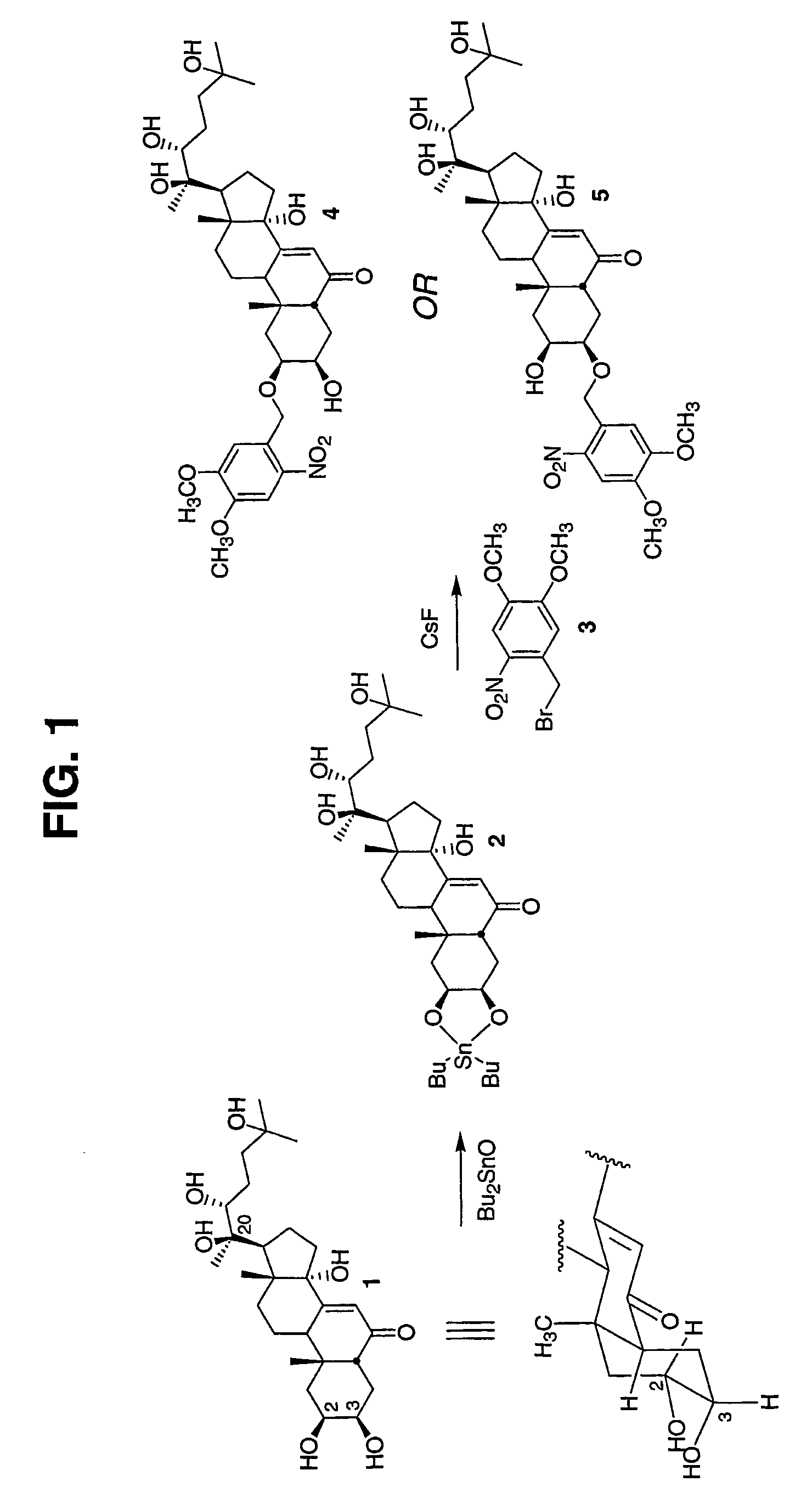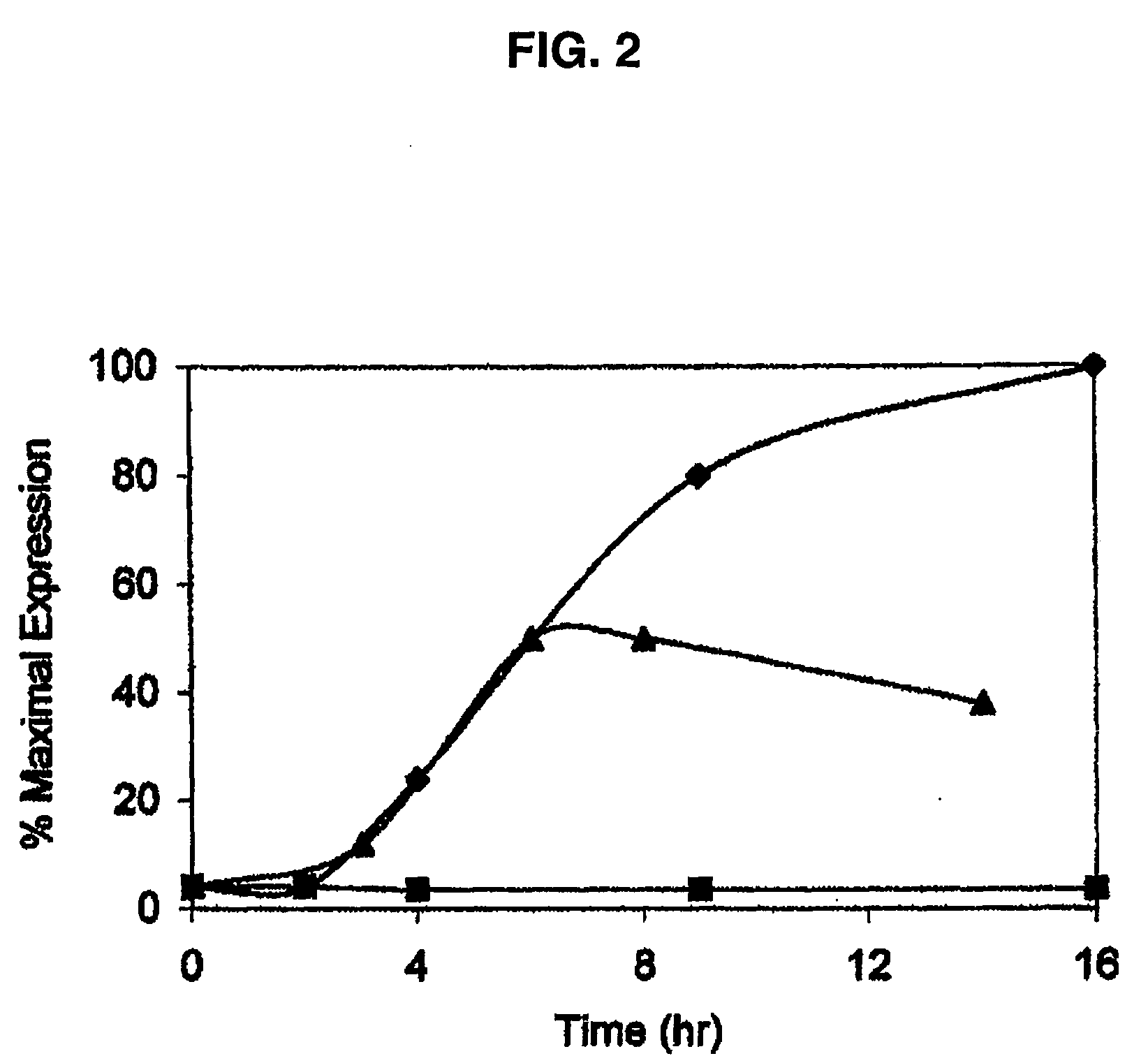Caged ligands and uses thereof
a technology of caged ligands and ligands, which is applied in the field of gene expression regulation, can solve the problems of not being able to study the role of certain genes (cyclin d1, stat5a, prolactin receptor) in mammary cancer, and knockouts fail to reproduce key elements, so as to prevent side effects
- Summary
- Abstract
- Description
- Claims
- Application Information
AI Technical Summary
Benefits of technology
Problems solved by technology
Method used
Image
Examples
example summary
[0128] Transgene-based inducible expression systems furnish the means to study the influence of any gene of interest at any point during an organism's lifetime. This powerful technology adds a temporal dimension to the existing knockout strategies commonly employed to assess protein function in vivo. However, in biological systems, the expression of individual genes is both temporally and spatially (i.e. cell / tissue)-regulated. Consequently, an experimental methodology that furnishes both temporal and spatial control over transgene expression would provide the additional spatial dimension to assess protein function in the context of tissue microenvironment. We describe herein the creation and study of a light-activatable counterpart to the previously reported ecdysone-inducible gene expression system. A stannylene acetal-based strategy was employed to prepare the first example of a caged ecdysteroid. The latter is nearly inactive as an inducing agent in a luciferase-based gene expre...
PUM
| Property | Measurement | Unit |
|---|---|---|
| Wavelength | aaaaa | aaaaa |
| Wavelength | aaaaa | aaaaa |
| Wavelength | aaaaa | aaaaa |
Abstract
Description
Claims
Application Information
 Login to View More
Login to View More - R&D
- Intellectual Property
- Life Sciences
- Materials
- Tech Scout
- Unparalleled Data Quality
- Higher Quality Content
- 60% Fewer Hallucinations
Browse by: Latest US Patents, China's latest patents, Technical Efficacy Thesaurus, Application Domain, Technology Topic, Popular Technical Reports.
© 2025 PatSnap. All rights reserved.Legal|Privacy policy|Modern Slavery Act Transparency Statement|Sitemap|About US| Contact US: help@patsnap.com



